It doesn't matter if you put an inline script or a script file reference in HTML, but the problem is from where/which place you put your script.
The HTML is executed from top to bottom, so when it tried to execute document.getElementById("navbar"), it cannot find navbar element because it came after the script. You can check that error by the below demo (click on show code snippet)
<!DOCTYPE html>
<html lang="sv">
<head>
<meta charset="UTF-8">
<meta http-equiv="X-UA-Compatible" content="IE=edge">
<meta name="viewport" content="width=device-width, initial-scale=1.0">
<title></title>
<link rel="stylesheet" href="stylesheet.css">
<script>
//only works if i put it here
window.onscroll = function() {
myFunction()
};
var navbar = document.getElementById("navbar");
var sticky = navbar.offsetTop;
function myFunction() {
if (window.pageYOffset >= sticky) {
navbar.classList.add("sticky")
} else {
navbar.classList.remove("sticky");
}
}
</script>
</head>
<body>
<div class="header">
<h2>Scroll Down</h2>
<p>Scroll down to see the sticky effect.</p>
</div>
<div id="navbar">
<a href="index.html">one</a>
<a href="organisation.html">two</a>
<a href="ongoing.html">three</a>
<a href="reference.html">four</a>
<a href="work.html">five</a>
<a href="contact.html">six</a>
</div>
<div class="content">
<h1>Fixed Top Menu</h1>
<h2>The navigation bar will stay at the top of the page while scrolling</h2>
<p>Some text some text some text some text..</p>
</div>
</body>
</html>
If you want to make it runnable, you can place your inline script after HTML elements (like what you've done in your question's code), or you can place a script file like below
<body>
All your other elements
<script src="javascript.js"></script>
</body>
You also can use window.onload event to make sure all HTML elements are ready before any Javascript logic execution. That would help you to place your script anywhere
<!DOCTYPE html>
<html lang="sv">
<head>
<meta charset="UTF-8">
<meta http-equiv="X-UA-Compatible" content="IE=edge">
<meta name="viewport" content="width=device-width, initial-scale=1.0">
<title></title>
<link rel="stylesheet" href="stylesheet.css">
<script>
//use window.onload to wrap your Javascript logic
window.onload = function() {
window.onscroll = function() {
myFunction()
};
var navbar = document.getElementById("navbar");
var sticky = navbar.offsetTop;
function myFunction() {
if (window.pageYOffset >= sticky) {
navbar.classList.add("sticky")
} else {
navbar.classList.remove("sticky");
}
}
}
</script>
</head>
<body>
<div class="header">
<h2>Scroll Down</h2>
<p>Scroll down to see the sticky effect.</p>
</div>
<div id="navbar">
<a href="index.html">one</a>
<a href="organisation.html">two</a>
<a href="ongoing.html">three</a>
<a href="reference.html">four</a>
<a href="work.html">five</a>
<a href="contact.html">six</a>
</div>
<div class="content">
<h1>Fixed Top Menu</h1>
<h2>The navigation bar will stay at the top of the page while scrolling</h2>
<p>Some text some text some text some text..</p>
</div>
</body>
</html>
Side note, I'd prefer you to place your script at the end of the HTML. Users will see the content first (HTML content) instead of waiting for Javascript loading, which makes them see a blank page for a while because it blocks content renderings from HTML elements.

 My code only works if I include Javascript code in my HTML file using the
My code only works if I include Javascript code in my HTML file using the